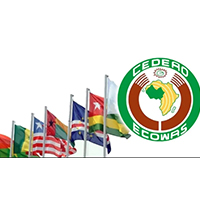Egypt will issue its LE10 plastic note as soon as the New Administrative Capital’s printing facilities start working, Deputy Governor of the Central Bank, Gamal Negm said.
This came during a meeting of the House of Representatives Economic Affairs Committee, to discuss the observations of the Legislative Department of the Council of State on a draft law submitted by the government to issue a law for the Central Bank and the Egyptian apparatus, which was approved by Parliament in all its articles.
Negm explained that the issuance of the plastic note, the LE 10- category does not mean that its old and currently equivalent counterpart will be canceled, stressing that the old category will still have the power of discharge even in the presence of the new category, and citizens have the right to use them naturally without the slightest problem.
The deputy governor of the Central Bank said that the plastic currency is different from the paper one only in quality, as the raw material for the new currency industry would be the 10-pound category of polymeric material, and there is no difference in the strength of the release.
Plastic currencies are produced from polymer, and was first used as currency-making material in Australia in 1988. In 1968, Australia began researching for a scientific solution to combat forgeries of the new decimal currency after it issued its $10 notes in 1966. The state spent 10 years in trials to overcome technical problems. In 1996, Securency International was formed as a joint venture between the Reserve Bank of Australia (RBA) and Innovia Films to market the technology.
“By 1998, all Australian banknotes were is- sued in plastic and by 2009 Securency was exporting to 25 countries, with more than 3 billion polymer notes in circulation,” notes CSIROpedia.
The Bank of England claims polymer is cleaner and more durable than other currency-comprising materials, and it allows the addition of extra security features. Polymer reportedly about 2.5 times longer than paper notes, although they take longer to biodegrade.
The environmental impact of the lifecycle of banknotes worth €3 billion produced in 2003 is equivalent to the environmental impact of driving a car around the world in 9,235 times, according to a study conducted by the Bank of Canada in 2016.
The study revealed that at the end of the lifecycle of paper money, it is usually torn and transported to the landfill. The polymer sheets extracted from the circulation are chopped into granules and used to manufacture every- day plastics, such as garden furniture.
Source: Egypt Today
Get the latest Banknotes news and updates with our free iOS and Android app. Download Now!



